#Cornus canadensis
Explore tagged Tumblr posts
Text
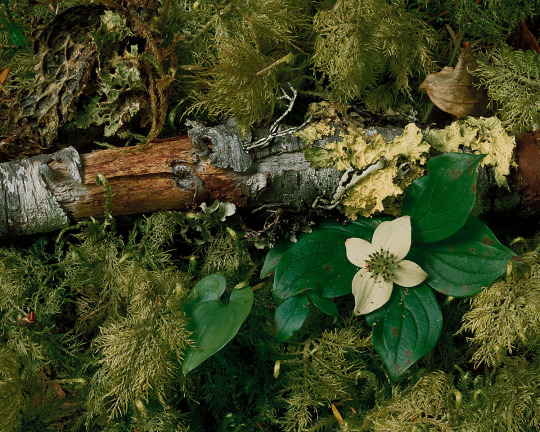
Photo by Dick Busher:
An intimate landscape from the rain forest of Olympic National Park.
Captured on film with a Sinar Norma 4x5 view camera, and digitized with a Tango drum scanner at 5,000 dpi.
213 notes
·
View notes
Photo

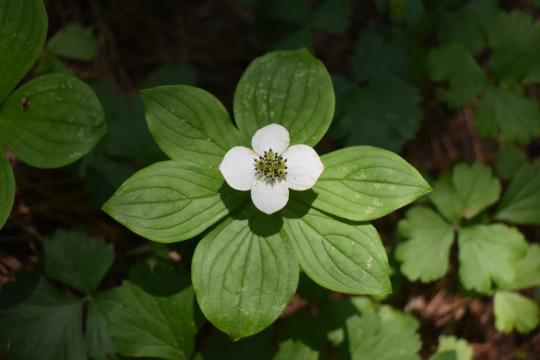
Bunchberry Cornus canadensis Cornaceae
Photographs taken on June 20, 2023, at Petroglyphs Provincial Park, Woodview, Ontario, Canada.
#wildflowers of southern ontario#white#Bunchberry#Cornus canadensis#Cornus#Cornaceae#wildflowers#wildflower#flowers#flower#nature#Petroglyphs Provincial Park#Woodview#Ontario#Canada
230 notes
·
View notes
Text

Cornus canadensis
38 notes
·
View notes
Text



Bunchberry, Cornus canadensis
41 notes
·
View notes
Text
Plants for The Vast
Bellflowers (Campanula)
Soapwort (Saponaria)
Lupine (Lupinus)
Columbine (Aquilegia)
Yarrow (Achillea millefolium)
Delphinium (Delphinium elatum)
Lilacs (Syringa vulgaris)
Blanket flower (Gaillardia aristata)
Rocky Mountain Penstemon (Penstemon strictus)
Mountain Pansy (Viola lutea)
Mountain Laurel (Kalmia latifolia)
Garden Phlox (Phlox paniculata)
Rustyback Fern (Asplenium ceterac)
Flame Azalea (Rhododendron calendulaceum)
Bitterroot (Lewisia rediviva)
Fireweed (Chamerion angustifolium)
Piper's Bellflower (Campanula piperi)
Bloodroot (Sanguinaria canadensis)
Boltonia (Boltonia asteroids)
Alpine aster (Aster alpinus)
Dogwood tree (Cornus florida)
Brown's peony and California peony (Paeonia brownii, Paeonia californica)
Whitebark, limber, and bristlecone pine (Pinus albicaulis, Pinus flexilis, and Pinus subsection Balfourianae)
#og.txt#popculture magic#paganism#pop culture paganism#tma paganism#tma pcp#the magnus archives#tma#the vast#the falling titan
20 notes
·
View notes
Photo




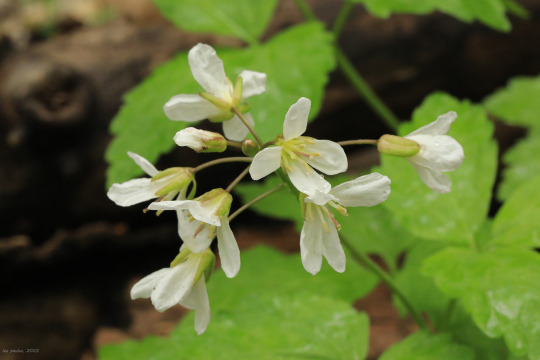
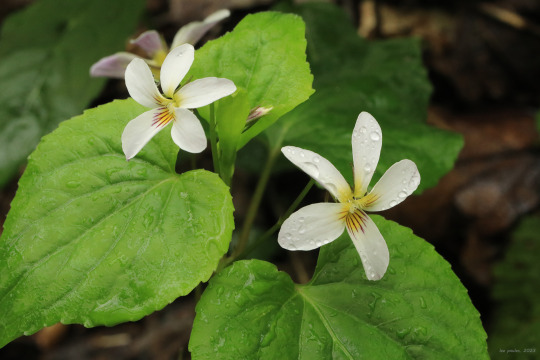




The dreary weather persisted today, so I blew off a planned trip to Ohiopyle and hiked several trails along Clay Run in Coopers Rock State Forest instead. The pink lady’s slipper orchids (Cypripedium acaule) are now coming into bloom, reminding me that May is just around the corner. From top: flowering dogwood (Cornus florida); the plummeting green-yellow flowers of striped maple (Acer pensylvanicum); broadleaf toothwort (Cardamine diphylla); Canada violet (Viola canadensis); two-leaf miterwort (Mitella diphylla); Jack-in-the-pulpit (Arisaema triphyllum); and pink lady’s slipper orchid.
#appalachia#vandalia#west virginia#coopers rock state forest#clay run#late april#wildflowers#spring#pink lady's slipper#flowering dogwood#striped maple#broadleaf toothwort#crinkleroot#pepper root#two-leaved toothwort#canada violet#jack-in-the-pulpit#miterwort#two-leaf miterwort
211 notes
·
View notes
Text
My Garden Flowers Part 3
All photos mine. The small buttercup and evening primrose are edited for colour since the camera didn't catch it and washed it out.
In order of appearance:
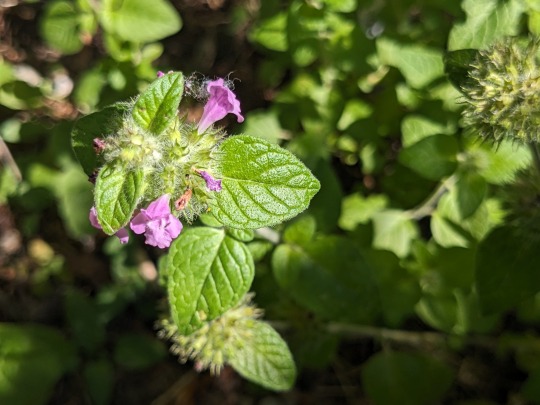
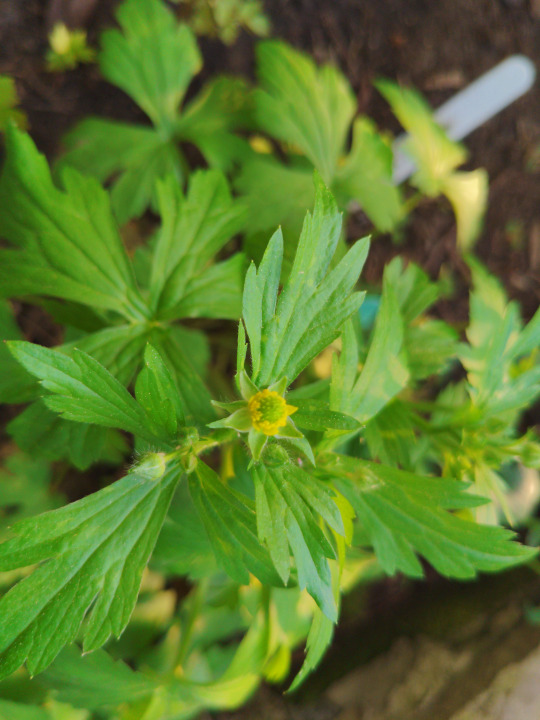

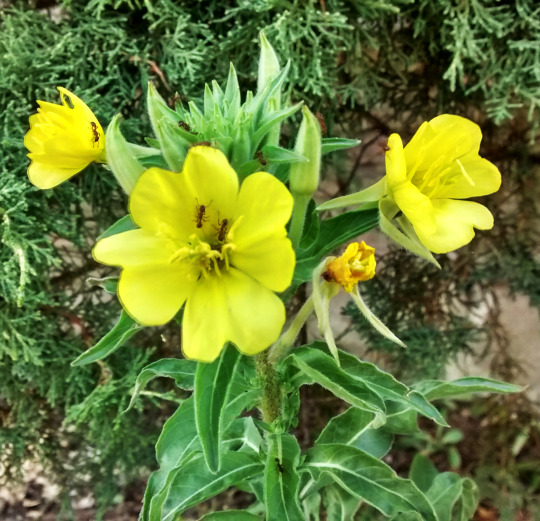
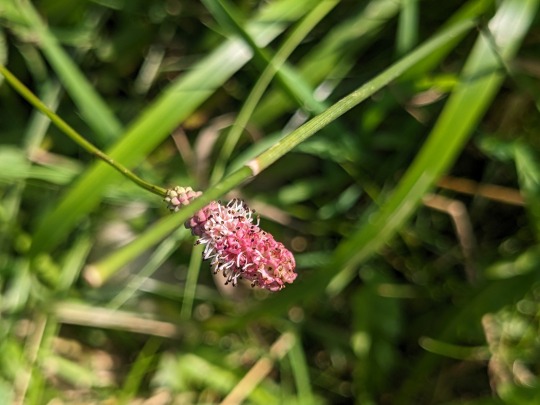




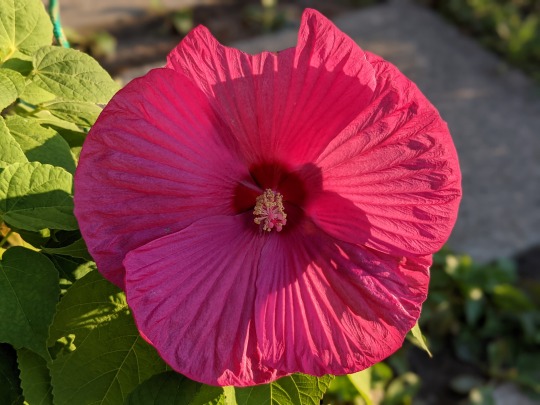
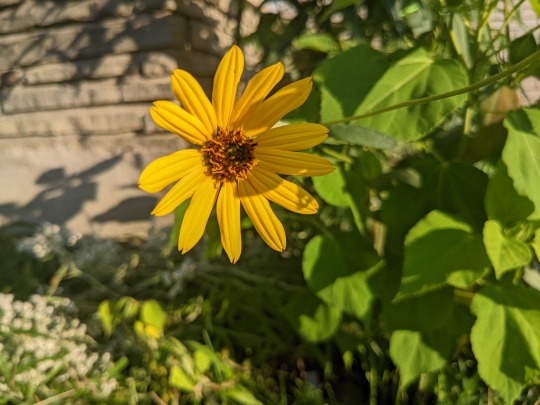

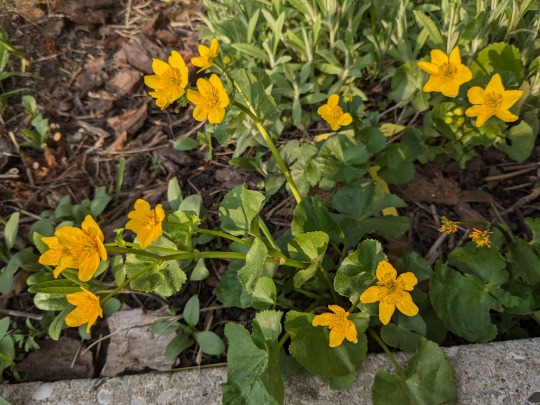

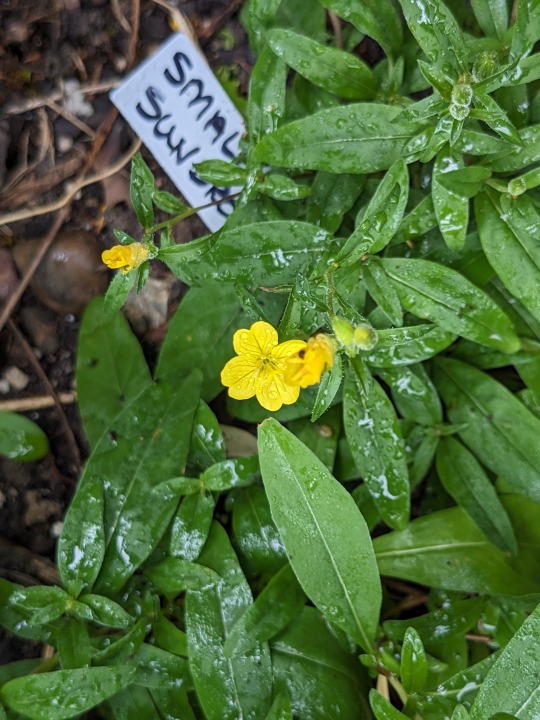


In order of appearance:
061. Wild Basil (Clinopodium vulgare) Didn't do so well the last place I had her in, but she seems happy in this spot, so fingers crossed.
062. Crested Iris (Iris cristata) Not pictured as she hasn't flowered yet.
063. Smallflower Buttercup (Rancunculus abortivus) Not much to look at compared with other buttercups but one of the only native buttercups with (limited) edible uses.
064. Smooth Solomon's Seal (Polygonatum biflorum) Not pictured as she hasn't flowered yet. Soon, hopefully!
065. False Solomon's Seal (Maianthemum racemosa) Not pictured as she hasn't flowered yet, but she's growing well so hopefully next year.
066. Blisterwort (Ranunculus recurvatus) I didn't plant that. She just turned up last year. Not pictured as I haven't got any pictures yet.
067. Fairy Spuds (Claytonia virginica) Not pictured as she hasn't flowered yet. She's a wee little spud in the ground.
068. Flowering Dogwood (Cornus floridus) Not pictured as she hasn't flowered yet but she is slowly spreading out.
069. Plantain-Leaf Sedge (Carex plantaginea) Not pictured as I haven't got pictures yet. I should. It's a neat plant. Evergreen, too!
070. Virginia Bluebells (Mertensia virginica) One of the prettiest plants I've ever seen, from the shape and texture of the leaves to the purplish pink buds to the bright blue bell-shaped flowers. They're spring ephemerals, though, so they're long gone by now. But will emerge next spring!
071. Evening Primrose (Oenothera biennis) Only lives for two years and reseeds itself. It's a common weed along sidewalks, but its flowers glow yellow in the evening and often remain in bloom at night.
072. Squirrel Corn (Dicentra canadensis) Not pictured as she hasn't flowered yet. The leaves are really cute, though.
073. Large Toothwort (Cardamine maxima) Not pictured as she hasn't flowered yet.
074. Wintergreen (Gaultheria procumbens) Not pictured as I haven't got any pictures yet.
075. Great Burnet (Sanguisorba officinalis) A cultivar, not sure which one. I'll get the wild type if/when I can.
076. American Plum (Prunus americana) I was not expecting her to flower this year! Hopefully she will next year too, and without aphids this time so I can have some plums. :)
077. Smooth Aster (Symphyotrichum laeve) So like I said, I do think New England asters are the prettiest of this genus, but smooth asters are very nice in their own way. Tender bluish leaves, and delicate light purple flowers.
078. Sweet Grass (Hierochloe odorata) Not pictured as I haven't got any pictures yet. She only flowered one year. Hasn't since. I won't miss a photo next time.
079. Nodding Onion (Allium cernuum) What's better than pretty flowers? Tasty pretty flowers!
080-081. Swamp Rose Mallow (Hibiscus moscheutos) Two different cultivars and the red one has died, but I did get my hands on the wild type! That will hopefully bloom this year.
082. Stiff Sunflower (Helianthus pauciflorus subrhomboideus) Holds her own against the much more aggressive Nuttall's sunflower. Sometimes called beautiful sunflower. I don't know how one decides which species of a very showy genus gets that name, but I guess she won out.
083. Pearly Everlasting (Anaphalis margaritacea) Another one that was hard to choose a photo of. You just hardly believe they're real!
084. Marsh Marigold (Caltha palustris) I planted her where there's a drip from the eavestrough so she can get very wet when it rains. :) She is not a marigold but instead part of the buttercup family.
085. Nuttall's Sunflower (Helianthus nuttallii) Whenever I am expressing frustration about sunflowers, it is almost always this species. lol Very beautiful but very aggressive.
086. Larkspur Violet (Viola pedatifida) Not pictured as she hasn't flowered yet.
087. White Turtlehead (Chelone glabra) Not pictured as she hasn't flowered yet.
088. Small Sundrops (Oenothera perennis) Not quite as intensely yellow as some of her relatives but still very bright.
089. Bigleaf Aster (Eurybia macrophylla) You generally grow her for foliage rather than her flowers, but flowering she is! Very drought-tolerant, but spreads more readily in less harsh conditions.
090. Bride's Feathers (Aruncus dioicus) Southern Ontario and surrounding area's evolution really went off on the lacy white flowers, and this species' flowers might be the laciest of them all.
#blackswallowtailbutterfly#my photos#photography#my garden#garden flowers#native plant gardening#native flowers of Carolinian Canada and USA#Viola sororia#Rancunculus abortivus#Mertensia virginica#Oenothera biennis#Sanguisorba officinalis#Prunus americana#Symphyotrichum laeve#Allium cernuum#Hibiscus moscheutos#Helianthus pauciflorus subrhomboideus#Anaphalis margaritacea#Caltha palustris#Helianthus nuttallii#Oenothera perennis#Aruncus dioicus
11 notes
·
View notes
Photo

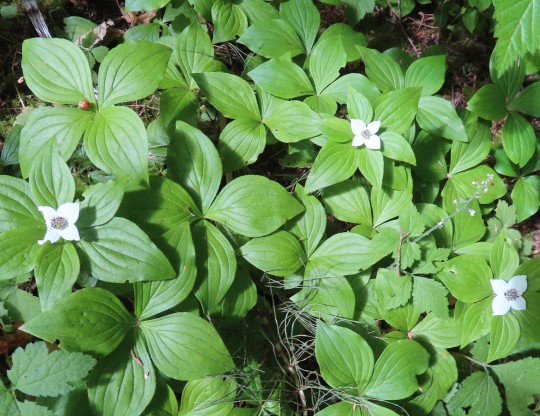

Cornus canadensis (Canadian bunchberry)
About a month ago I was talking to a neighbor about her pink dogwood tree and she showed me a four petaled, white flower in her garden. She said it had just “shown up” last year and wondered if this was a dogwood too. “Oh no,” I said, “dogwoods are either shrubs or small trees. I’ve never seen a dogwood growing as a groundcover before.”
Of course this conversation raised an element of doubt and as soon as I got home I opened my copy of Plants of Coastal British Columbia (revised edition) and there it was on page 320, Cornus canadensis. A week later I was walking the forest trails in Stanley Park and I found it all over the place.
This wildflower is native to Canada, Greenland, Northern China, North Korea, Japan, parts of Siberia and a number of US states. Although most dogwoods are shrubs and small trees, two species, Canadian bunchberry and Alaskan bunchberry (Cornus × unalaschkensis) grow between four and eight inches tall.
#flowers#photographers on tumblr#Canadian bunchberry#dogwood#native plant#fleurs#flores#fiori#blumen#bloemen#Stanley Park#Vancouver
88 notes
·
View notes
Text

Cornus canadensis aka Bunchberry
I've been growing this native plant in my flower bed for at least 3 years as a ground cover and this is the first time it has bloomed.
30 notes
·
View notes
Text







White spring flowers
Large-thorned hawthorn (Crataegus macracantha)
Red osier dogwood (Cornus sericea)
Canadian anemone (Anemonidium canadensis)
Guelder-rose (Viburnum opulus)
Daisy fleabane (Erigeron annuus)
Morrow’s honeysuckle (Lonicera morrowii)
White wild indigo (Baptisia alba)
8 notes
·
View notes
Photo

Hi GPODers! We couldn’t avoid it forever. No matter how hard we hold onto fall, winter comes rolling along and for many of us that also means snowfall. Today’s photos come from Tingshu Hu and her husband Philip Zhao in Dunstable, Massachusetts. We’ve seen different aspects of their space during the peak seasons (Tingshu’s Front Garden in Late Summer, Summer in Tingshu’s Back Garden, Low Maintenance Garden in Massachusetts, A Space Created with Chinese Design Elements and English Garden Aesthetics, etc.), but today we’re getting a look at the interest Tingshu has managed to create even when the gardens are coated in a layer of snow. Four season interests, especially winter views, are essential for a home garden in New England, since we have 4+ months of winter, covered in snow and ice. The contrasts of colors and shapes against the white snowy background are still attracting us to go outside and explore the garden in winter. Snow came late this year. We received the first snow on December 5, 2024. Philip took some pictures while it was snowing. The centerpiece of the back garden is the Prairifire crabapple tree (Malus × ‘Prairifire’, Zones 4–8). Several pictures were taken going around the crabapple tree. There are numerous red berries on the crabapple tree, attracting many birds in winter. On the right side is a dwarf Colorado blue spruce (Picea pungens ‘Glauca’, Zones 2–8), lightly frosted in white snow. You can also see a pergola and garden fences through the tree branches. Looking from below the red crabapple berries, there are blue spruce, yew, azalea, bare branches of a dogwood, and an arbor. Further beyond, there are several pine trees. Looking from below an apple tree, with a bare branch hanging overhead, the crabapple tree, the blue spruce and a false cypress stand on the left. A magnolia tree, a Japanese maple (Acer palmatum and cvs., Zones 6–9) and a few azaleas stand above a stone retaining wall. There is a yew at the bottom of the photo. Looking west with the crabapple on the right, a false cypress stands between a white fence, and a tall purple fence of the vegetable garden. A grape pergola stands at the left side. View of the center of the back garden across a frozen fishpond. On the right side are the leaves of a clumping bamboo and a red twig dogwood (Cornus sericea, Zones 3–7). Curb appeals at the front garden: combination of pergola, fences and evergreens (rhododendron, false cypress and arborvitae), and an eastern redbud tree (Cercis canadensis and cvs., Zones 4–9) on the left. Outside the fence are a young Japanese maple, a gold cone juniper (Juniperus communis ‘Gold Cone’, Zones 5–7) and a dried maiden grass (Miscanthus sinensis, Zones 5–9). Our dog Luke is enjoying the sun after the snow. In front of Luke is a lotus in a mini pond, with dried flower heads and stems. On the left side is a clumping bamboo. The colors of Chinese mums (Chrysanthemum × morifolium, Zones 5–9) are visible from the glass of the green house. The fishpond under the pergola is frozen. All koi fish have been moved to a pond inside the sunroom under the solar panels. Chinese mums looking at the snow-covered front yard. Deep in the winter we may receive heavier snow. Then the garden will have very different looks. Back garden in January 2023, after a heavy snow. Luke went for a walk (Deedee was nearby but not in this picture). Front garden after a heavy snow in a previous winter. The eastern redbud is standing tall and proud, dressed with fluffy snow on its branches. Thank you for another incredible tour of your gardens, Tingshu! Winter interest is acquired with lots of foresight, and it’s clear that you’ve planned and prepared for snow-covered beauty to great success. Have you experienced the first snow fall of the season yet? Or is your garden already covered in a thick layer of ice and snow? Though the more subtle and subdued scenes of winter don’t necessarily have the same vibrant energy as peak season blooms, there is still plenty of interest and plants to admire and appreciate. Consider sharing your winter garden with Garden Photo of the Day! Follow the directions below to submit your photos via email, or send me a DM on Instagram: @agirlherdogandtheroad. Have a garden you’d like to share? Have photos to share? We’d love to see your garden, a particular collection of plants you love, or a wonderful garden you had the chance to visit! To submit, send 5-10 photos to [email protected] along with some information about the plants in the pictures and where you took the photos. We’d love to hear where you are located, how long you’ve been gardening, successes you are proud of, failures you learned from, hopes for the future, favorite plants, or funny stories from your garden. Have a mobile phone? Tag your photos on Facebook, Instagram or Twitter with #FineGardening! Do you receive the GPOD by email yet? Sign up here. Fine Gardening Recommended Products Berry & Bird Rabbiting Spade, Trenching Shovel Fine Gardening receives a commission for items purchased through links on this site, including Amazon Associates and other affiliate advertising programs. Ideal Tool for All Gardeners Use: Our heavy duty trenching shovel is designed by a professional gardening tool designer. Lifetime Durability: This heavy duty drain spade is made of high-quality stainless steel, it is very strong and durable, even if it is used for high-strength work, it will not bend. Ergonomic Wood Handle: The handle of this planting spade is made of ash hardwood harvested from FSC-certified forests and has an ergonomically streamlined design, making it very suitable for everyone's hands. Multi-Use: This digging shovel is generally used for digging trenches, digging holes, transplanting, edging, moving compost, cutting thick turf and furrowing. The sharp blade allows you to cut, scoop, dig, lift and dice in hard soil. Spear & Jackson 4930FZ Razorsharp Telescopic Tree Pruner Fine Gardening receives a commission for items purchased through links on this site, including Amazon Associates and other affiliate advertising programs. Telescopic tree pruner with SK5 carbon steel blade which stays sharper for longer. Variable length telescopic handle extends up to 92 Inch (2340mm). Lopper for cutting branches up to 1.2" (30mm). 13 inch (330mm) saw is ideal for cutting thicker branches. Supplied with a long cord and pull-action handle. Part of the Razorsharp Advantage collection, the obvious choice for gardeners who demand and expect precise, powerful performance. "Grow Your Own" Great British Growing 2020 Award Winners. The Regenerative Landscaper: Design and Build Landscapes That Repair the Environment Fine Gardening receives a commission for items purchased through links on this site, including Amazon Associates and other affiliate advertising programs. 2024 Nautilus Award Gold Medal Winner! This awe-inspiring guide weaves together permaculture design, food resiliency, climate adaptation, community organizing, and indigenous wisdom that you can implement in your own backyard. Source link
0 notes
Text










Native planter box update: oops! all palmate coltsfoot edition
#pnw native plants#native plants#petasites frigidus#cornus canadensis#geum macrophyllum#polystichum munitum#tellima grandiflora
66 notes
·
View notes
Photo

Canadian Bunchberry Cornus canadensis Cornaceae
Photograph taken on June 18, 2023, at Purdon Conservation Area, Lanark Highlands, Ontario, Canada.
#wildflowers of southern ontario#Canadian Bunchberry#bunchberry#Cornus canadensis#Cornus#white#wildflowers#wildflower#flowers#Purdon Conservation Area#conservation area#nature#Lanark Highlands#Ontario#Canada
32 notes
·
View notes
Photo

Hi GPODers! We couldn’t avoid it forever. No matter how hard we hold onto fall, winter comes rolling along and for many of us that also means snowfall. Today’s photos come from Tingshu Hu and her husband Philip Zhao in Dunstable, Massachusetts. We’ve seen different aspects of their space during the peak seasons (Tingshu’s Front Garden in Late Summer, Summer in Tingshu’s Back Garden, Low Maintenance Garden in Massachusetts, A Space Created with Chinese Design Elements and English Garden Aesthetics, etc.), but today we’re getting a look at the interest Tingshu has managed to create even when the gardens are coated in a layer of snow. Four season interests, especially winter views, are essential for a home garden in New England, since we have 4+ months of winter, covered in snow and ice. The contrasts of colors and shapes against the white snowy background are still attracting us to go outside and explore the garden in winter. Snow came late this year. We received the first snow on December 5, 2024. Philip took some pictures while it was snowing. The centerpiece of the back garden is the Prairifire crabapple tree (Malus × ‘Prairifire’, Zones 4–8). Several pictures were taken going around the crabapple tree. There are numerous red berries on the crabapple tree, attracting many birds in winter. On the right side is a dwarf Colorado blue spruce (Picea pungens ‘Glauca’, Zones 2–8), lightly frosted in white snow. You can also see a pergola and garden fences through the tree branches. Looking from below the red crabapple berries, there are blue spruce, yew, azalea, bare branches of a dogwood, and an arbor. Further beyond, there are several pine trees. Looking from below an apple tree, with a bare branch hanging overhead, the crabapple tree, the blue spruce and a false cypress stand on the left. A magnolia tree, a Japanese maple (Acer palmatum and cvs., Zones 6–9) and a few azaleas stand above a stone retaining wall. There is a yew at the bottom of the photo. Looking west with the crabapple on the right, a false cypress stands between a white fence, and a tall purple fence of the vegetable garden. A grape pergola stands at the left side. View of the center of the back garden across a frozen fishpond. On the right side are the leaves of a clumping bamboo and a red twig dogwood (Cornus sericea, Zones 3–7). Curb appeals at the front garden: combination of pergola, fences and evergreens (rhododendron, false cypress and arborvitae), and an eastern redbud tree (Cercis canadensis and cvs., Zones 4–9) on the left. Outside the fence are a young Japanese maple, a gold cone juniper (Juniperus communis ‘Gold Cone’, Zones 5–7) and a dried maiden grass (Miscanthus sinensis, Zones 5–9). Our dog Luke is enjoying the sun after the snow. In front of Luke is a lotus in a mini pond, with dried flower heads and stems. On the left side is a clumping bamboo. The colors of Chinese mums (Chrysanthemum × morifolium, Zones 5–9) are visible from the glass of the green house. The fishpond under the pergola is frozen. All koi fish have been moved to a pond inside the sunroom under the solar panels. Chinese mums looking at the snow-covered front yard. Deep in the winter we may receive heavier snow. Then the garden will have very different looks. Back garden in January 2023, after a heavy snow. Luke went for a walk (Deedee was nearby but not in this picture). Front garden after a heavy snow in a previous winter. The eastern redbud is standing tall and proud, dressed with fluffy snow on its branches. Thank you for another incredible tour of your gardens, Tingshu! Winter interest is acquired with lots of foresight, and it’s clear that you’ve planned and prepared for snow-covered beauty to great success. Have you experienced the first snow fall of the season yet? Or is your garden already covered in a thick layer of ice and snow? Though the more subtle and subdued scenes of winter don’t necessarily have the same vibrant energy as peak season blooms, there is still plenty of interest and plants to admire and appreciate. Consider sharing your winter garden with Garden Photo of the Day! Follow the directions below to submit your photos via email, or send me a DM on Instagram: @agirlherdogandtheroad. Have a garden you’d like to share? Have photos to share? We’d love to see your garden, a particular collection of plants you love, or a wonderful garden you had the chance to visit! To submit, send 5-10 photos to [email protected] along with some information about the plants in the pictures and where you took the photos. We’d love to hear where you are located, how long you’ve been gardening, successes you are proud of, failures you learned from, hopes for the future, favorite plants, or funny stories from your garden. Have a mobile phone? Tag your photos on Facebook, Instagram or Twitter with #FineGardening! Do you receive the GPOD by email yet? Sign up here. Fine Gardening Recommended Products Berry & Bird Rabbiting Spade, Trenching Shovel Fine Gardening receives a commission for items purchased through links on this site, including Amazon Associates and other affiliate advertising programs. Ideal Tool for All Gardeners Use: Our heavy duty trenching shovel is designed by a professional gardening tool designer. Lifetime Durability: This heavy duty drain spade is made of high-quality stainless steel, it is very strong and durable, even if it is used for high-strength work, it will not bend. Ergonomic Wood Handle: The handle of this planting spade is made of ash hardwood harvested from FSC-certified forests and has an ergonomically streamlined design, making it very suitable for everyone's hands. Multi-Use: This digging shovel is generally used for digging trenches, digging holes, transplanting, edging, moving compost, cutting thick turf and furrowing. The sharp blade allows you to cut, scoop, dig, lift and dice in hard soil. Spear & Jackson 4930FZ Razorsharp Telescopic Tree Pruner Fine Gardening receives a commission for items purchased through links on this site, including Amazon Associates and other affiliate advertising programs. Telescopic tree pruner with SK5 carbon steel blade which stays sharper for longer. Variable length telescopic handle extends up to 92 Inch (2340mm). Lopper for cutting branches up to 1.2" (30mm). 13 inch (330mm) saw is ideal for cutting thicker branches. Supplied with a long cord and pull-action handle. Part of the Razorsharp Advantage collection, the obvious choice for gardeners who demand and expect precise, powerful performance. "Grow Your Own" Great British Growing 2020 Award Winners. The Regenerative Landscaper: Design and Build Landscapes That Repair the Environment Fine Gardening receives a commission for items purchased through links on this site, including Amazon Associates and other affiliate advertising programs. 2024 Nautilus Award Gold Medal Winner! This awe-inspiring guide weaves together permaculture design, food resiliency, climate adaptation, community organizing, and indigenous wisdom that you can implement in your own backyard. Source link
0 notes
Photo

Hi GPODers! We couldn’t avoid it forever. No matter how hard we hold onto fall, winter comes rolling along and for many of us that also means snowfall. Today’s photos come from Tingshu Hu and her husband Philip Zhao in Dunstable, Massachusetts. We’ve seen different aspects of their space during the peak seasons (Tingshu’s Front Garden in Late Summer, Summer in Tingshu’s Back Garden, Low Maintenance Garden in Massachusetts, A Space Created with Chinese Design Elements and English Garden Aesthetics, etc.), but today we’re getting a look at the interest Tingshu has managed to create even when the gardens are coated in a layer of snow. Four season interests, especially winter views, are essential for a home garden in New England, since we have 4+ months of winter, covered in snow and ice. The contrasts of colors and shapes against the white snowy background are still attracting us to go outside and explore the garden in winter. Snow came late this year. We received the first snow on December 5, 2024. Philip took some pictures while it was snowing. The centerpiece of the back garden is the Prairifire crabapple tree (Malus × ‘Prairifire’, Zones 4–8). Several pictures were taken going around the crabapple tree. There are numerous red berries on the crabapple tree, attracting many birds in winter. On the right side is a dwarf Colorado blue spruce (Picea pungens ‘Glauca’, Zones 2–8), lightly frosted in white snow. You can also see a pergola and garden fences through the tree branches. Looking from below the red crabapple berries, there are blue spruce, yew, azalea, bare branches of a dogwood, and an arbor. Further beyond, there are several pine trees. Looking from below an apple tree, with a bare branch hanging overhead, the crabapple tree, the blue spruce and a false cypress stand on the left. A magnolia tree, a Japanese maple (Acer palmatum and cvs., Zones 6–9) and a few azaleas stand above a stone retaining wall. There is a yew at the bottom of the photo. Looking west with the crabapple on the right, a false cypress stands between a white fence, and a tall purple fence of the vegetable garden. A grape pergola stands at the left side. View of the center of the back garden across a frozen fishpond. On the right side are the leaves of a clumping bamboo and a red twig dogwood (Cornus sericea, Zones 3–7). Curb appeals at the front garden: combination of pergola, fences and evergreens (rhododendron, false cypress and arborvitae), and an eastern redbud tree (Cercis canadensis and cvs., Zones 4–9) on the left. Outside the fence are a young Japanese maple, a gold cone juniper (Juniperus communis ‘Gold Cone’, Zones 5–7) and a dried maiden grass (Miscanthus sinensis, Zones 5–9). Our dog Luke is enjoying the sun after the snow. In front of Luke is a lotus in a mini pond, with dried flower heads and stems. On the left side is a clumping bamboo. The colors of Chinese mums (Chrysanthemum × morifolium, Zones 5–9) are visible from the glass of the green house. The fishpond under the pergola is frozen. All koi fish have been moved to a pond inside the sunroom under the solar panels. Chinese mums looking at the snow-covered front yard. Deep in the winter we may receive heavier snow. Then the garden will have very different looks. Back garden in January 2023, after a heavy snow. Luke went for a walk (Deedee was nearby but not in this picture). Front garden after a heavy snow in a previous winter. The eastern redbud is standing tall and proud, dressed with fluffy snow on its branches. Thank you for another incredible tour of your gardens, Tingshu! Winter interest is acquired with lots of foresight, and it’s clear that you’ve planned and prepared for snow-covered beauty to great success. Have you experienced the first snow fall of the season yet? Or is your garden already covered in a thick layer of ice and snow? Though the more subtle and subdued scenes of winter don’t necessarily have the same vibrant energy as peak season blooms, there is still plenty of interest and plants to admire and appreciate. Consider sharing your winter garden with Garden Photo of the Day! Follow the directions below to submit your photos via email, or send me a DM on Instagram: @agirlherdogandtheroad. Have a garden you’d like to share? Have photos to share? We’d love to see your garden, a particular collection of plants you love, or a wonderful garden you had the chance to visit! To submit, send 5-10 photos to [email protected] along with some information about the plants in the pictures and where you took the photos. We’d love to hear where you are located, how long you’ve been gardening, successes you are proud of, failures you learned from, hopes for the future, favorite plants, or funny stories from your garden. Have a mobile phone? Tag your photos on Facebook, Instagram or Twitter with #FineGardening! Do you receive the GPOD by email yet? Sign up here. Fine Gardening Recommended Products Berry & Bird Rabbiting Spade, Trenching Shovel Fine Gardening receives a commission for items purchased through links on this site, including Amazon Associates and other affiliate advertising programs. Ideal Tool for All Gardeners Use: Our heavy duty trenching shovel is designed by a professional gardening tool designer. Lifetime Durability: This heavy duty drain spade is made of high-quality stainless steel, it is very strong and durable, even if it is used for high-strength work, it will not bend. Ergonomic Wood Handle: The handle of this planting spade is made of ash hardwood harvested from FSC-certified forests and has an ergonomically streamlined design, making it very suitable for everyone's hands. Multi-Use: This digging shovel is generally used for digging trenches, digging holes, transplanting, edging, moving compost, cutting thick turf and furrowing. The sharp blade allows you to cut, scoop, dig, lift and dice in hard soil. Spear & Jackson 4930FZ Razorsharp Telescopic Tree Pruner Fine Gardening receives a commission for items purchased through links on this site, including Amazon Associates and other affiliate advertising programs. Telescopic tree pruner with SK5 carbon steel blade which stays sharper for longer. Variable length telescopic handle extends up to 92 Inch (2340mm). Lopper for cutting branches up to 1.2" (30mm). 13 inch (330mm) saw is ideal for cutting thicker branches. Supplied with a long cord and pull-action handle. Part of the Razorsharp Advantage collection, the obvious choice for gardeners who demand and expect precise, powerful performance. "Grow Your Own" Great British Growing 2020 Award Winners. The Regenerative Landscaper: Design and Build Landscapes That Repair the Environment Fine Gardening receives a commission for items purchased through links on this site, including Amazon Associates and other affiliate advertising programs. 2024 Nautilus Award Gold Medal Winner! This awe-inspiring guide weaves together permaculture design, food resiliency, climate adaptation, community organizing, and indigenous wisdom that you can implement in your own backyard. Source link
0 notes
Photo

Hi GPODers! We couldn’t avoid it forever. No matter how hard we hold onto fall, winter comes rolling along and for many of us that also means snowfall. Today’s photos come from Tingshu Hu and her husband Philip Zhao in Dunstable, Massachusetts. We’ve seen different aspects of their space during the peak seasons (Tingshu’s Front Garden in Late Summer, Summer in Tingshu’s Back Garden, Low Maintenance Garden in Massachusetts, A Space Created with Chinese Design Elements and English Garden Aesthetics, etc.), but today we’re getting a look at the interest Tingshu has managed to create even when the gardens are coated in a layer of snow. Four season interests, especially winter views, are essential for a home garden in New England, since we have 4+ months of winter, covered in snow and ice. The contrasts of colors and shapes against the white snowy background are still attracting us to go outside and explore the garden in winter. Snow came late this year. We received the first snow on December 5, 2024. Philip took some pictures while it was snowing. The centerpiece of the back garden is the Prairifire crabapple tree (Malus × ‘Prairifire’, Zones 4–8). Several pictures were taken going around the crabapple tree. There are numerous red berries on the crabapple tree, attracting many birds in winter. On the right side is a dwarf Colorado blue spruce (Picea pungens ‘Glauca’, Zones 2–8), lightly frosted in white snow. You can also see a pergola and garden fences through the tree branches. Looking from below the red crabapple berries, there are blue spruce, yew, azalea, bare branches of a dogwood, and an arbor. Further beyond, there are several pine trees. Looking from below an apple tree, with a bare branch hanging overhead, the crabapple tree, the blue spruce and a false cypress stand on the left. A magnolia tree, a Japanese maple (Acer palmatum and cvs., Zones 6–9) and a few azaleas stand above a stone retaining wall. There is a yew at the bottom of the photo. Looking west with the crabapple on the right, a false cypress stands between a white fence, and a tall purple fence of the vegetable garden. A grape pergola stands at the left side. View of the center of the back garden across a frozen fishpond. On the right side are the leaves of a clumping bamboo and a red twig dogwood (Cornus sericea, Zones 3–7). Curb appeals at the front garden: combination of pergola, fences and evergreens (rhododendron, false cypress and arborvitae), and an eastern redbud tree (Cercis canadensis and cvs., Zones 4–9) on the left. Outside the fence are a young Japanese maple, a gold cone juniper (Juniperus communis ‘Gold Cone’, Zones 5–7) and a dried maiden grass (Miscanthus sinensis, Zones 5–9). Our dog Luke is enjoying the sun after the snow. In front of Luke is a lotus in a mini pond, with dried flower heads and stems. On the left side is a clumping bamboo. The colors of Chinese mums (Chrysanthemum × morifolium, Zones 5–9) are visible from the glass of the green house. The fishpond under the pergola is frozen. All koi fish have been moved to a pond inside the sunroom under the solar panels. Chinese mums looking at the snow-covered front yard. Deep in the winter we may receive heavier snow. Then the garden will have very different looks. Back garden in January 2023, after a heavy snow. Luke went for a walk (Deedee was nearby but not in this picture). Front garden after a heavy snow in a previous winter. The eastern redbud is standing tall and proud, dressed with fluffy snow on its branches. Thank you for another incredible tour of your gardens, Tingshu! Winter interest is acquired with lots of foresight, and it’s clear that you’ve planned and prepared for snow-covered beauty to great success. Have you experienced the first snow fall of the season yet? Or is your garden already covered in a thick layer of ice and snow? Though the more subtle and subdued scenes of winter don’t necessarily have the same vibrant energy as peak season blooms, there is still plenty of interest and plants to admire and appreciate. Consider sharing your winter garden with Garden Photo of the Day! Follow the directions below to submit your photos via email, or send me a DM on Instagram: @agirlherdogandtheroad. Have a garden you’d like to share? Have photos to share? We’d love to see your garden, a particular collection of plants you love, or a wonderful garden you had the chance to visit! To submit, send 5-10 photos to [email protected] along with some information about the plants in the pictures and where you took the photos. We’d love to hear where you are located, how long you’ve been gardening, successes you are proud of, failures you learned from, hopes for the future, favorite plants, or funny stories from your garden. Have a mobile phone? Tag your photos on Facebook, Instagram or Twitter with #FineGardening! Do you receive the GPOD by email yet? Sign up here. Fine Gardening Recommended Products Berry & Bird Rabbiting Spade, Trenching Shovel Fine Gardening receives a commission for items purchased through links on this site, including Amazon Associates and other affiliate advertising programs. Ideal Tool for All Gardeners Use: Our heavy duty trenching shovel is designed by a professional gardening tool designer. Lifetime Durability: This heavy duty drain spade is made of high-quality stainless steel, it is very strong and durable, even if it is used for high-strength work, it will not bend. Ergonomic Wood Handle: The handle of this planting spade is made of ash hardwood harvested from FSC-certified forests and has an ergonomically streamlined design, making it very suitable for everyone's hands. Multi-Use: This digging shovel is generally used for digging trenches, digging holes, transplanting, edging, moving compost, cutting thick turf and furrowing. The sharp blade allows you to cut, scoop, dig, lift and dice in hard soil. Spear & Jackson 4930FZ Razorsharp Telescopic Tree Pruner Fine Gardening receives a commission for items purchased through links on this site, including Amazon Associates and other affiliate advertising programs. Telescopic tree pruner with SK5 carbon steel blade which stays sharper for longer. Variable length telescopic handle extends up to 92 Inch (2340mm). Lopper for cutting branches up to 1.2" (30mm). 13 inch (330mm) saw is ideal for cutting thicker branches. Supplied with a long cord and pull-action handle. Part of the Razorsharp Advantage collection, the obvious choice for gardeners who demand and expect precise, powerful performance. "Grow Your Own" Great British Growing 2020 Award Winners. The Regenerative Landscaper: Design and Build Landscapes That Repair the Environment Fine Gardening receives a commission for items purchased through links on this site, including Amazon Associates and other affiliate advertising programs. 2024 Nautilus Award Gold Medal Winner! This awe-inspiring guide weaves together permaculture design, food resiliency, climate adaptation, community organizing, and indigenous wisdom that you can implement in your own backyard. Source link
0 notes